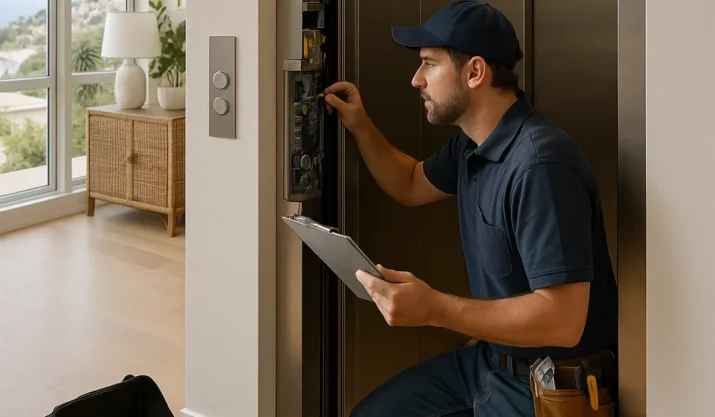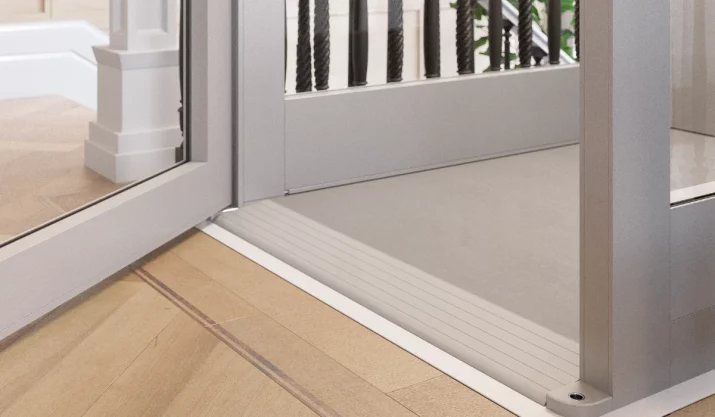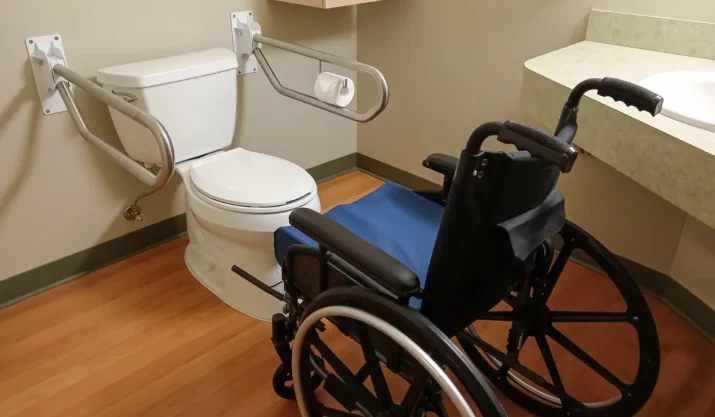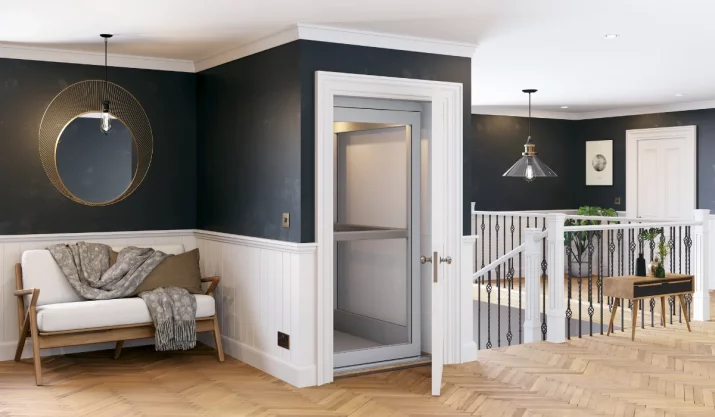Home Elevator Maintenance Checklist for California Homes

Table of Contents
- Key Takeaways:
- What to expect from residential elevator maintenance
- Why maintenance matters
- Monthly maintenance you can do yourself
- Annual service checklist for California homes
- Signs you may need elevator repair
- Maintenance for other mobility systems
- Thinking about a new home or elevator system?
- Do You Need a Permit for Elevator Work in California?
- Should you get a service contract?
- Choosing the right elevator company in California
- Keep Your Elevator Safe and Reliable
- FAQs
Keeping your home elevator in top shape isn’t just about comfort; it’s about safety, reliability, and long-term value. Whether you live in a hillside home in Los Angeles, a multistory townhouse in San Francisco, or a beachside retreat in Newport Beach, regular home elevator maintenance in California is essential.
This checklist will help you stay on top of maintenance, understand the needs of new and aging systems, and know when to call in a maintenance company or elevator experts for service or elevator repair.
Key Takeaways:
- Regular home elevator maintenance helps prevent costly repairs and ensures safe, smooth operation year-round.
- California homes, especially in Los Angeles, San Francisco, and coastal areas, require more frequent checks due to seismic activity and salt air.
- Signs like jerky movement or slow travel can indicate the need for immediate elevator repair by a licensed elevator company.
- Annual professional service includes safety checks, lubrication, battery backup tests, and ensures your system meets California code.
What to expect from residential elevator maintenance
Your residential elevator is more than a convenience. It’s a vital part of your daily routine. Just like a car, it needs routine checks to keep everything running smoothly.
Why maintenance matters
California building codes and seismic safety standards make professional servicing especially important. Without consistent elevator maintenance, minor issues can escalate, leading to costly repairs, downtime, or even safety hazards.
Whether your system is hydraulic, pneumatic, or traction-based, or even includes home lifts or dumbwaiters, the basics of care apply to all.
Monthly maintenance you can do yourself
You don’t need to be a technician to handle these simple monthly tasks:
1. Clean the cab and landing areas
Dust buildup or debris in the cab or around the doors can interfere with sensors and door tracks. Wipe surfaces, vacuum the floor, and check that thresholds are clear.
2. Listen for unusual noises
Grinding, clicking, or whining sounds can indicate wear in the motor, guide rails, or brakes. Report anything new or persistent to your elevator service provider.
3. Test the phone or emergency system
Most in-home elevators have an emergency communication system. Test it once a month to ensure it’s working, especially important if someone in your home relies on the elevator for mobility. Make sure your service provider has your current phone number on file in case follow-up is needed.
Annual service checklist for California homes
Schedule a professional elevator service at least once a year. In earthquake-prone areas like Southern California or Northern California, biannual inspections are smart, especially if you’re in a new home or have an older model.
Here’s what your annual inspection should include:
1. Safety inspection and code compliance
A certified technician will inspect the braking system, safety sensors, and emergency systems, ensuring compliance with California code.
2. Lubrication and part adjustments
Moving parts like rails, pulleys, and door mechanisms need regular lubrication to reduce wear and ensure smooth travel.
3. Electrical system check
Inspectors check the wiring, fuses, lights, and control panels for corrosion, wear, or loose connections.
4. Battery backup test
If your home elevator system includes a battery backup, your technician should test and replace the battery as needed to ensure functionality in a power outage.
Signs you may need elevator repair
If your elevator is behaving irregularly, don’t wait for your next scheduled service. Common issues include:
- Jerky or uneven movement
- Slow travel time
- Delayed or non-responsive doors
- Frequent stops between floors
These symptoms usually mean it’s time to call a local elevator company that knows the terrain and local codes.
Location-specific considerations
Los Angeles and San Diego
Frequent use and power fluctuations in urban areas can wear down electrical systems more quickly. Technicians should check backup systems and surge protection more often in these environments.
San Francisco and San Jose
Older homes and buildings in Northern California may have legacy systems or historic designs. It’s essential to work with elevator experts who understand these specialized systems and offer high-quality parts.
Newport Beach and Long Beach
Beachfront homes face higher humidity and salt exposure, which accelerates corrosion. Routine checks of door seals, wiring, and metal surfaces are essential.
Maintenance for other mobility systems
If your home includes home lifts, stair lifts, or dumbwaiters, remember to schedule regular inspections for them as well. These devices often share electrical systems or track components with your elevator, so servicing them on the same schedule improves both convenience and safety.
Thinking about a new home or elevator system?
If you’re building a new home or planning a renovation, it’s a good time to look into home elevator installation or home lift options. Choosing a provider early in the process helps with planning and ensures your system meets all California safety standards from day one.
Visiting a showroom or calling a trusted elevator company with your questions, whether about maintenance schedules or warranty coverage, can help you make informed decisions. Be sure to ask for a direct phone number for ongoing support.
Do You Need a Permit for Elevator Work in California?
If you’re planning to install a new home elevator or make significant repairs, California law may require a permit. The state’s Elevator Safety Unit regulates elevator installations, alterations, and inspections to ensure code compliance.
Before beginning any major work, check with your contractor or the California Department of Industrial Relations to confirm whether a permit is needed. Minor maintenance typically doesn’t require one, but anything involving structural changes or new installations usually does.
Should you get a service contract?
Many homeowners find that a high-quality service contract pays off in the long run. Benefits often include:
- Regular maintenance visits
- Priority scheduling for repair services
- Discounted or included parts
- Extended warranty protection
California Mobility’s team of expert elevator technicians located throughout California provides prompt, reliable assistance tailored to your elevator needs.
Choosing the right elevator company in California
Not every elevator company is created equal. Make sure yours:
- Is licensed and insured in California
- Has experience with your specific system or model
- Offers 24/7 support with a direct phone number
- Understands both residential elevator service and home elevator installation
If possible, visit a showroom to see their systems and meet their team. You’ll get a clearer sense of what high-quality support looks like.
Keep Your Elevator Safe and Reliable
Your elevator is a long-term investment in safety, comfort, and mobility. With regular care, both DIY and professional, you can keep it operating smoothly for years. Whether you’re maintaining a historic lift in San Francisco, managing a new system in Los Angeles, or exploring home lift options for your future build, start with a trusted maintenance company that understands California homes.
If you rely on your elevator daily, don’t wait for issues to appear. Regular maintenance keeps your elevator running smoothly and gives you peace of mind.
At California Mobility, our expert technicians specialize in servicing and repairing mobility aids. We provide reliable routine maintenance and prompt repairs to keep your elevator in top condition.
Want help maintaining your elevator? Our California technicians offer reliable service that keeps your system running smoothly.
Contact us to schedule maintenance and keep your elevator running smoothly.






